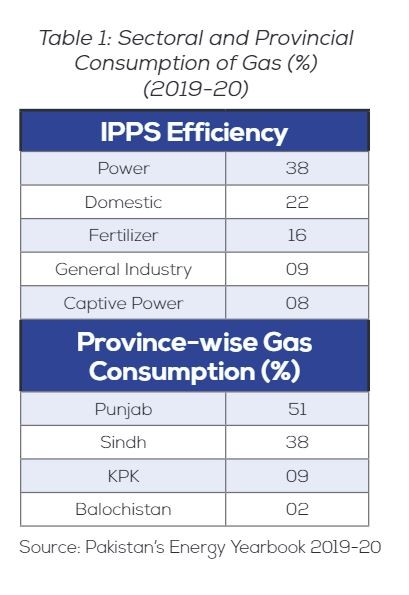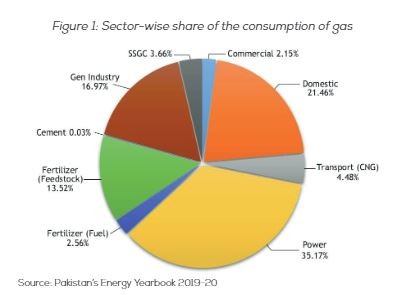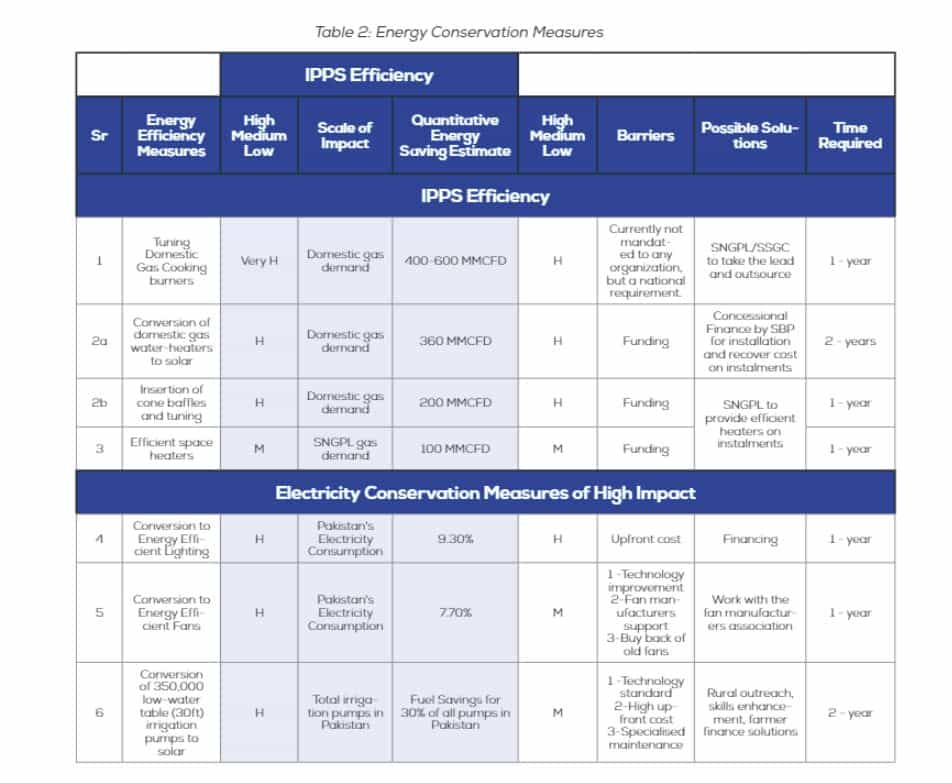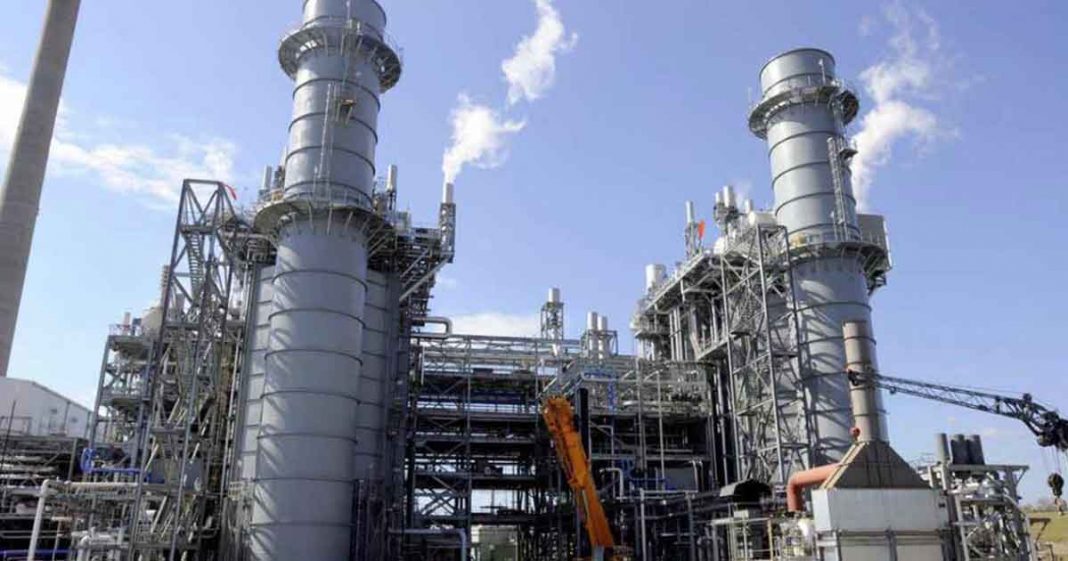Pakistan is faced with an acute gas shortage. Natural gas resources, which comprise 50 percent of the country’s total energy supply, are declining rapidly with no sizeable gas discoveries insight, in tandem with an inefficient gas use. To manage the country’s acute gas shortage, the government has proposed a moratorium on gas supply to Captive Power Plants (CPPs).
The underlying strategy is to encourage grid electricity consumption while reducing demand for gas. This article briefly explains why, under the current circumstances, such a policy measure is shortsighted and should focus instead on practicing energy-efficient protocols to alleviate the situation.
Read More: Energy Security key for Pakistan’s progress
To begin with, the captive share of gas consumption is merely 8 percent of the total gas consumed (see Table 1). Moreover, captive’s gas usage is not consumptive but economic; that is, it leads to sustained production, with benefits of employment generation and enhanced exports. CPPs are not necessarily inefficient when compared to Bulk Power Generation.

The efficiency of the IPPs (Engro Power, Orient Power, Saif Power, Sapphire Power, Foundation Power, Halmore Power) is 50 percent at the generation level, but once the line losses and commercial inefficiencies of the DISCOs are accounted for, the efficiency at the point of consumption is hardly 42 percent. The higher efficiency of the new RLNG based power plants (Quaid-i-Azam thermal plant, Punjab thermal plant, Balloki plant, and Haveli Bahadur Shah Plant) is net 60 percent at the generation but reduces to 48 percent at the consumption level because of the reasons stated above falling for short of the efficiency achieved by Co-Gen units.
Today’s wastage is tomorrow’s shortage – Pakistan remains one of the most inefficient countries in Energy Consumption and conversion rate to GDP. Keeping in view of the same, the energy savings potential in Pakistan from energy conservation and efficiency measures is substantial – at an estimated 20 percent of total electricity use, according to NEECA.
Read More: Circular debt paralyzes Pakistan’s power sector
The savings of 11 million TOE of energy can best be achieved by appropriate pricing and product standardization policies, forcing consumers to make appropriate changes in equipment and lifestyle changes. The residential sector, the biggest consumer of electricity and a substantial gas user, remained unmoved and have little incentive to opt for energy efficiency measures due to low energy commodity rates.
There is no doubt that achieving the economic potential of energy efficiency is complicated, but Pakistan needs to start somewhere. Acknowledging that the use of natural gas in Pakistan is highly inefficient is the first step. In part, the inefficiencies are attributed to large quantities of appliances being produced by small-scale manufacturers that do not meet national or international standards of safety.
According to the World Bank, inefficient devices in the residential sector are estimated to cause gas waste to the magnitude of 30,000 – 40,000 MMCF per year. Industries and utilities that operate on commercial principles must achieve acceptable performance and management standards; if not, their staff must face the consequences of missing minimum performance standards.

Sadly, this is not the case in our country. In 2010-11, the Pakistan Standards and Quality Control Authority (PSQCA) set up a certification program for appliance manufacturers. Improvements in appliance certification, energy efficiency labeling, and enforcement of standards were deemed necessary.
Read More: Ghias Khan: Engro’s vision under CPEC for energy & agriculture
However, while regulations are in place, the enforceability of standards on appliances for sale in the market is weak. If conservation of natural gas is to become a priority, enforceability must be strong. However, inefficient appliances are only part of the problem. Inefficient use by customers does the rest of the damage.
Pakistan can save up to 10-15 percent (10-12 MTOE) of primary energy supply through energy efficiency, but residential gas consumers have limited incentive to shift to more efficient appliances because of low gas prices, the lowest slab at Rs. 120/MMBTU. Reducing the consumption of gas at the consumer level by improving efficiency can lead to significant savings on bills and decrease the government’s pressure for making scarce resources available.
If considered, there is room for exponential savings, e.g., 12 percent efficiency of gas stoves used in households can be enhanced to 36 percent with a handful of simple measures such as fine-tuning stoves, replacing their nozzles, switching to high-efficiency cookware like pressure cookers and thermal bags, etc.
Read More: Thar Coal: Pakistan’s best bet to ensure energy security?
Similarly, gas geysers can be made highly efficient through cone baffles’ mandatory use, saving 30 percent gas. Likewise, a typical solar water heater will save about 7,500 cubic feet of natural gas per year. If all 2 million gas water heaters of SNG-PL customers were converted to solar, 15 billion cubic feet of natural gas would be saved.
Considering the 173 billion cubic feet of domestic gas consumption in Punjab, this translates to a saving of about 9 percent annually. Dynamometer tests have measured that CNG-fueled vehicles have 10-15 percent lower power output than petrol engines, and there is a high cost of conversion (vehicle conversion, natural gas conversion to CNG).

Moreover, increased exhaust-valve wear and tear in CNG-operated vehicles are anticipated due to the gaseous fuel’s drying effect. But if energy efficiency is the outcome, what is the process? In other words, how can the government develop and implement measures to bring it about? To develop appropriate policies, strategies, laws, and regulatory frameworks to enhance energy efficiency, a multitude of approaches will be required.
Read More: Energy Minister Omar briefs US official on Pakistan’s energy sector reforms
There will be no “cookie-cutter” approaches. Monthly or quarterly audits by SNGPL/SSGC will be necessary to verify that approved quality equipment is installed and used. Penalties in case of violations and inefficiency will have to be encouraged via price signals and incentives. All along, our public will need to be educated on reaping the benefits of efficient usage.
Government departments can additionally provide free services to upgrade existing inefficient equipment like servicing or replacing worn-out/damaged parts that can save up to 600 MMCFD of gas. The fact that SNGPL has already undertaken a few successful but limited measures such as cone baffles and smart thermostats for geysers is an encouraging start.
Another silver lining is that policy and research circles are increasingly paying attention to the challenges and opportunities associated with Pakistan’s energy crises. A recent report by the Consortium for Development Policy Research (CDPR) and RAFTAAR, Research and Advocacy for The Advancement of Allied Reforms, for instance, makes recommendations for energy conservation based on their potential scale of positive impact (see Table 2). The gains to gas conservation therein are clear.

Government interventions through legislation enforcing minimum standards are required to seriously impact the inefficient use of energy. Energy conservation measures are profitable investments compared to new energy supply capacity – also cheaper and quicker to implement.
Read More: CPEC: Pakistan’s quest for energy security
Without far-reaching institutional restructuring, piecemeal reforms are unlikely to form the basis of a sustainable and efficient energy sector. The quality of Energy Sector Regulators has continuously been declining due to the creeping bureaucratic capture of both NEPRA and OGRA, whereas DGPC remains a government department.
The technical organization and manpower needed to regulate a vibrant market-based energy sector were never hired. Consequently, the regulators have very narrowly interpreted their mandate and limited it to functions they were already performing, i.e., tariff setting. The government should redefine the role of the regulators focusing on operational rather than just tariff setting.
The regulators must focus on the creation of energy markets as defined in their acts. Furthermore, there are no incentives present in Pakistan for small and large consumers to conserve energy and adopt energy-efficient products. The government should recognize and publicize the measures taken by large consumers to save energy.
Read More: Nuclear power: clean, cheap, and sustainable source of energy for Pakistan
The government should also start awareness campaigns for the people about energy-efficient appliances through publicity. Reduction in energy intensity will not only increase the energy savings but will also contribute to improving the economic and social welfare in the economy.
In summary, the government’s proposal to suspend gas supply to captive power plants is misinformed and may do more harm than good, at least in the near future. There are numerous benefits of utilizing gas in captive, including (i) high efficiency, (ii) reliability, unlike grid electricity, (iii) no theft, (iv) less burden on the national exchequer (there are no financial subsidies), and (v) no drain on foreign reserves.
At the same time, prioritizing energy efficiency and directing more efforts towards the same can help reap significant gains. Other South Asian countries like Bangladesh are already promoting the efficient use of existing resources, both on the supply and demand side. Energy inefficiencies play a prominent role in increasing energy intensity, while structural changes cause a small reduction in intensity.
Read More: Pakistan Energy Mix: Overview of Gas Sector (Upstream)
From the global perspective, some countries (like the US, China, India) have improved the level of energy intensity through the implementations of energy efficiency measures while others (France, Canada, and the United Kingdom) with structural changes. Pakistan can learn much from their example and endeavor to maintain energy efficiency benchmarks at international standards to save gas and tackle shortages.
Under the existing circumstances, this seems to be the only viable option if Pakistan aims to resolve the perils and problems plaguing the gas sector without compromising industrial sectors’ interests and economic contribution.
Mr Shahid Sattar, now Executive Director & Secretary General of All Pakistan Textile Mills
Association (APTMA), has previously served as Member Planning Commission of Pakistan and an advisor to the Ministry of Finance, Ministry of Petroleum, Ministry of Water & Power.


